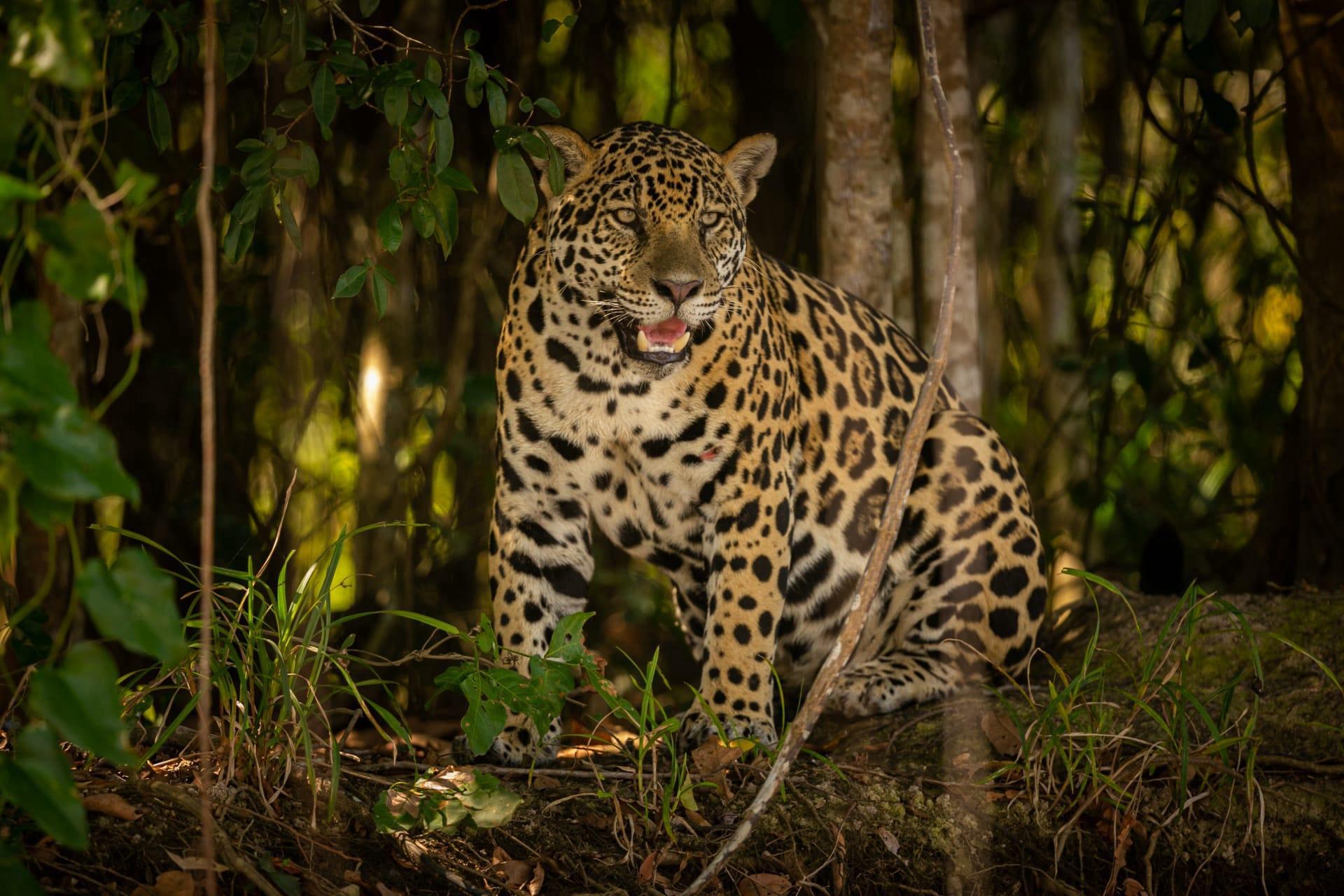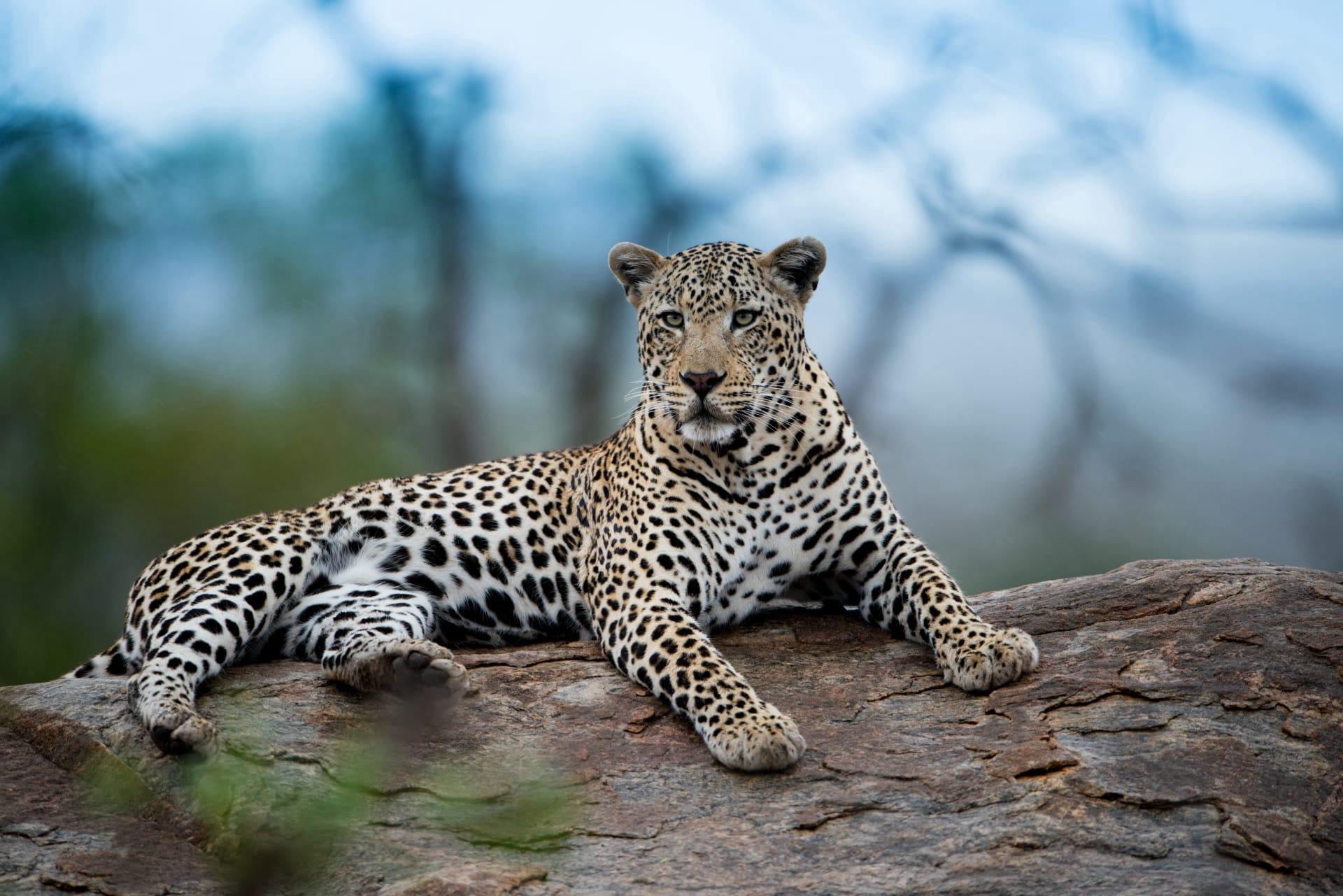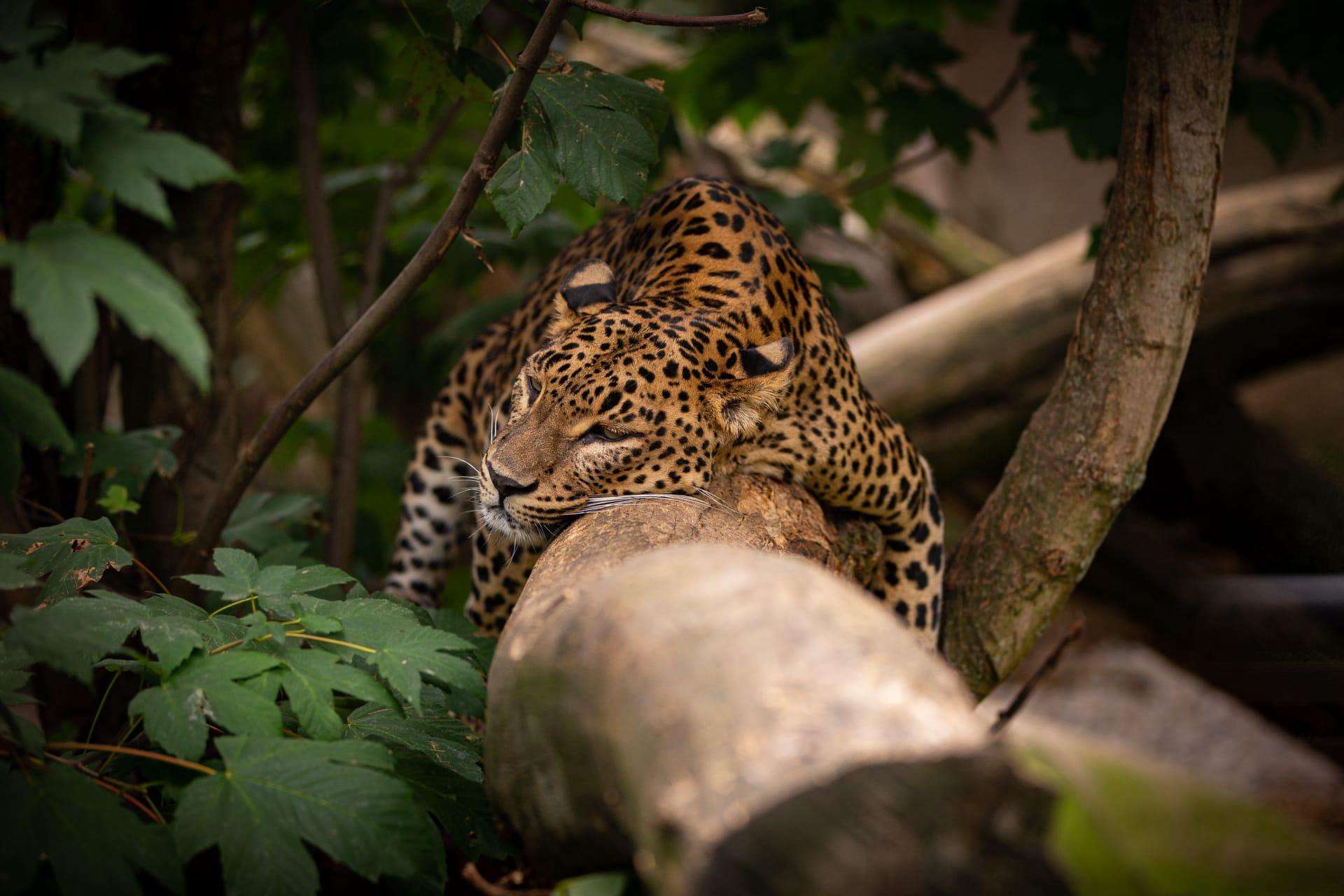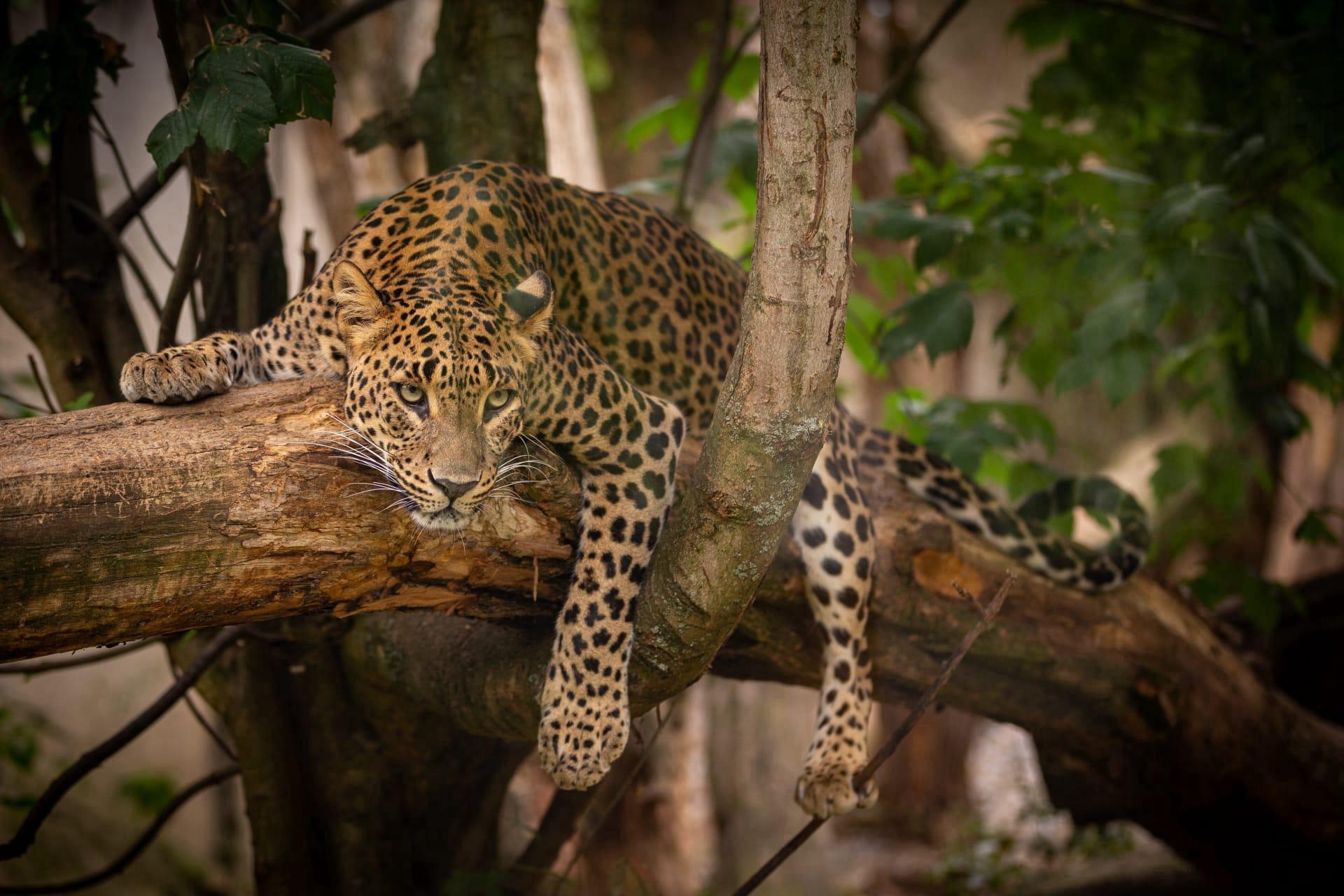1
Leopards, known scientifically as Panthera pardus, display a remarkable adaptation in their coat pattern. Their iconic rosettes – circular, rose-like markings – are not just for show. These patterns provide excellent camouflage in their natural habitat, blending seamlessly with the dappled light of forested areas. Each leopard's rosettes are unique, much like human fingerprints, making them identifiable individually. This camouflage is crucial for their hunting strategy, as they rely on stealth and surprise.
Another fascinating aspect of leopards is their incredible strength, particularly in their neck and shoulder muscles. They are famous for their ability to climb trees, even when carrying prey much heavier than themselves. A leopard can hoist up a carcass weighing up to 90 kilograms (198 pounds), which is nearly twice their own body weight, into a tree to keep it safe from scavengers like hyenas.

2
Leopards are highly adaptable animals, found in various habitats across Africa and parts of Asia. What makes them unique is their ability to survive in both arid and rainforest regions. They adjust their hunting and living habits according to the environment. For instance, in the desert areas, they can survive with minimal water, deriving moisture from their prey. On the other hand, in dense rainforests, they utilize trees for stalking and storing their kills.
Despite being solitary creatures, leopards have a sophisticated way of communicating with one another. They use scent markings, vocalizations, and claw marks on trees to convey messages. These signals can indicate territory boundaries, reproductive status, or even act as warnings. Their vocal range is also impressive, including growls, snarls, purrs, and their most distinctive sound, the saw-like rasp, heard most commonly at night.

3
The leopard's hunting technique is a testament to its agility and intelligence. They are ambush predators, preferring to stalk their prey closely and silently before making a quick and powerful attack. Their diet is notably varied, ranging from small animals like rodents and birds to larger prey like antelopes and deer. This dietary flexibility is a key factor in their survival across diverse habitats.
Leopards are also known for their swimming abilities, which is uncommon among big cats. They are capable swimmers and often hunt fish or crabs, especially in areas near water bodies. This ability not only helps them in hunting but also aids in crossing rivers or wetlands in their territory.

4
Leopards have a unique relationship with humans in folklore and symbolism. In many cultures, they are revered and symbolize strength, agility, and cunning. For instance, in African folklore, the leopard is often depicted as a wise and just king among animals. In ancient Greek mythology, leopards were associated with Dionysus, the god of wine and festivity, symbolizing the wild and untamed aspects of nature.
An interesting physiological trait of leopards is their ability to purr. While they share this trait with domestic cats, the mechanism is different. Leopards purr both when inhaling and exhaling, whereas domestic cats purr only during exhaling. This purring is thought to be a form of communication, especially between a mother and her cubs, or a way to express contentment.

5
The leopard's night vision is extraordinary. Their eyes are adapted to see seven times better in the dark than humans. This night vision is aided by a layer behind the retina called the tapetum lucidum, which reflects light back through the retina, increasing visibility in low light. This adaptation is crucial for their nocturnal hunting.
Finally, leopards are crucial for ecosystem balance. As apex predators, they regulate the population of herbivores, preventing overgrazing and maintaining a healthy balance in their habitat. Their presence indirectly supports a wide range of plant and animal species, highlighting their importance in biodiversity conservation.